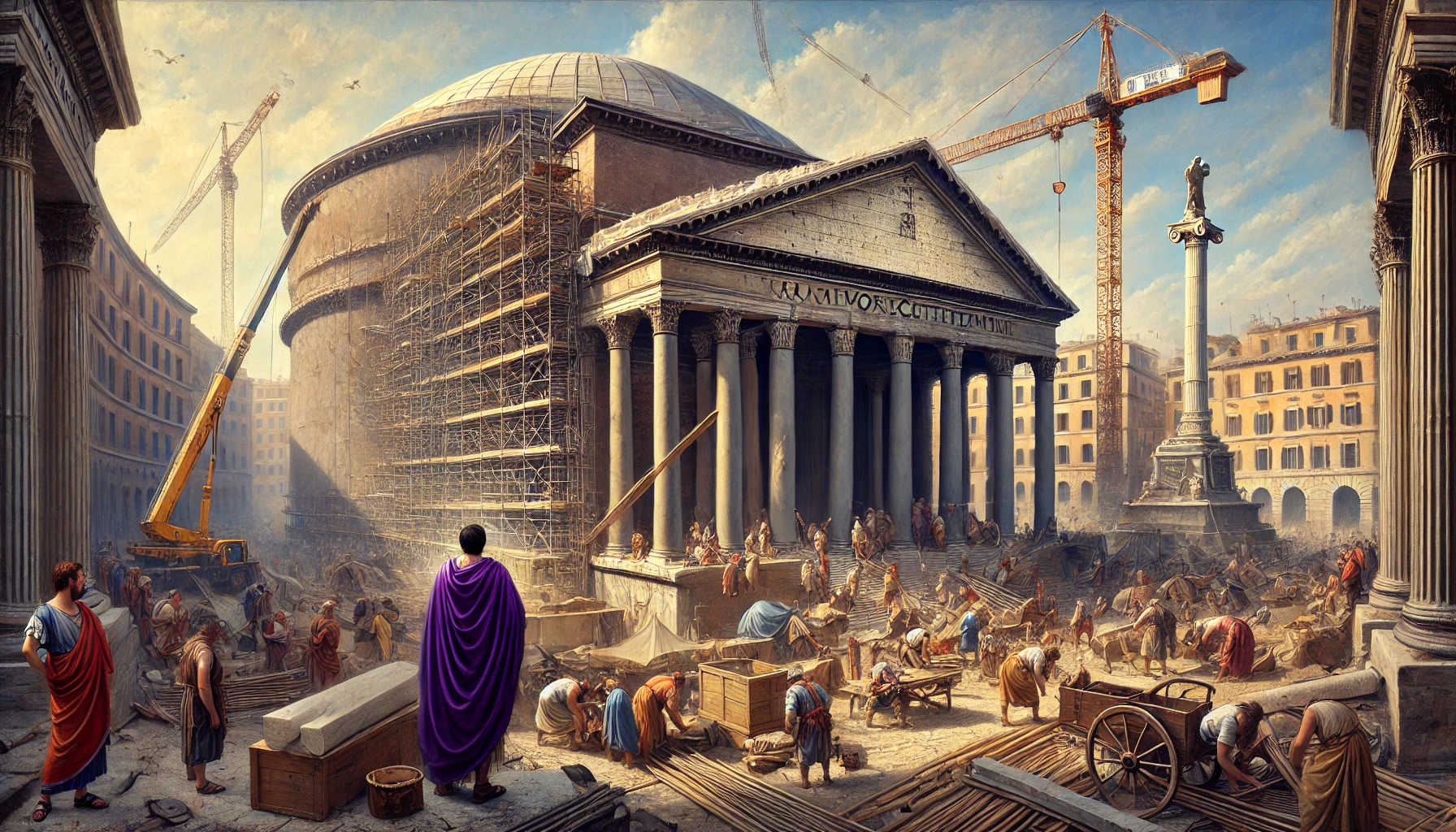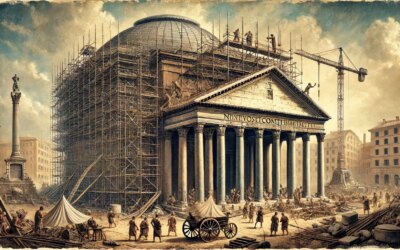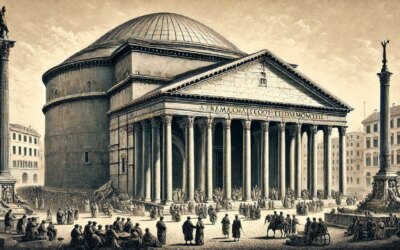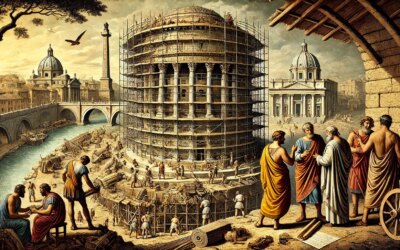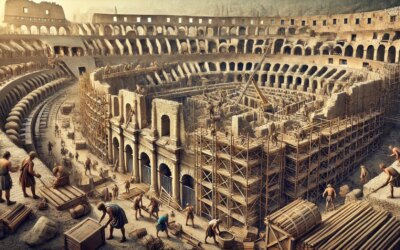Introduction: A Monument to the Gods—and Roman Genius
In the early 2nd century AD, under the patronage of Emperor Hadrian, Rome witnessed the construction of one of its most enduring and awe-inspiring monuments: the Pantheon. Dedicated to all the gods, the Pantheon was not only a religious center but also a showcase of Roman engineering brilliance. Its vast dome and perfect proportions have stood the test of time, inspiring architects for centuries.
From Agrippa to Hadrian: Reimagining a Temple
The original Pantheon, built by Marcus Agrippa in 27 BC, was destroyed by fire and later rebuilt. The version that stands today was entirely reconstructed under Hadrian, around 118–128 AD. Although Hadrian retained the original inscription attributing the building to Agrippa, the new structure was a radical reinvention, combining classical elements with cutting-edge engineering.
The Vision of Hadrian
Hadrian, known for his love of architecture and personal involvement in design, likely worked closely with a team of skilled architects and engineers. His goal was to create a building that honored the gods of Rome while celebrating the harmony and rationality of the universe—a temple in which divine order was mirrored in architectural perfection.
The Engineering Feat of the Dome
The Pantheon’s most astonishing feature is its massive dome, spanning 43.3 meters (142 feet)—equal in height and diameter. At the time, it was the largest dome in the world, and it remains the largest unreinforced concrete dome today. The Romans achieved this through a series of innovative techniques:
- Gradual lightening of materials: Heavier concrete and stone at the base gave way to lighter pumice and tufa toward the top.
- Hidden coffering: The decorative recesses in the ceiling reduced weight and added aesthetic beauty.
- Oculus: The open central eye of the dome, 8.2 meters wide, not only admitted light but also reduced structural stress.
Labor and Materials
The construction relied on an enormous workforce, including enslaved laborers, skilled craftsmen, and engineers. Materials were brought from across the empire: Egyptian granite for columns, North African yellow marble, and Phrygian purple stone. The coordination required to build such a structure speaks volumes about Rome’s logistical and administrative capabilities.
Interior Harmony and Cosmic Design
The interior of the Pantheon was as groundbreaking as its exterior. Designed as a perfect sphere inscribed within a cylinder, it created a space that was at once mathematically precise and spiritually uplifting. The alignment of the oculus with the sun’s path meant the interior changed dynamically with the day and seasons, reinforcing the divine symbolism of light and geometry.
The Pantheon’s Role in Roman Society
Originally a temple for the worship of all gods, the Pantheon also served as a political statement about imperial power and divine sanction. It was used for official ceremonies, imperial cult worship, and eventually, after the rise of Christianity, was converted into a church in the 7th century, preserving it from destruction.
Legacy and Influence
The Pantheon’s design has inspired countless buildings across history—from Renaissance churches to modern government buildings. Architects such as Brunelleschi and Michelangelo studied its proportions and structure. It continues to be a symbol of architectural perfection, timeless beauty, and the Roman mastery of form and function.
Conclusion: An Eternal Dome for an Eternal City
The construction of the Pantheon under Emperor Hadrian stands as one of the greatest achievements in architectural history. More than a religious building, it is a monument to human ingenuity and the Roman vision of a cosmos ordered by reason and harmony. Its enduring presence in the heart of Rome is a testament to the empire’s brilliance and ambition—a true gift to the ages.

